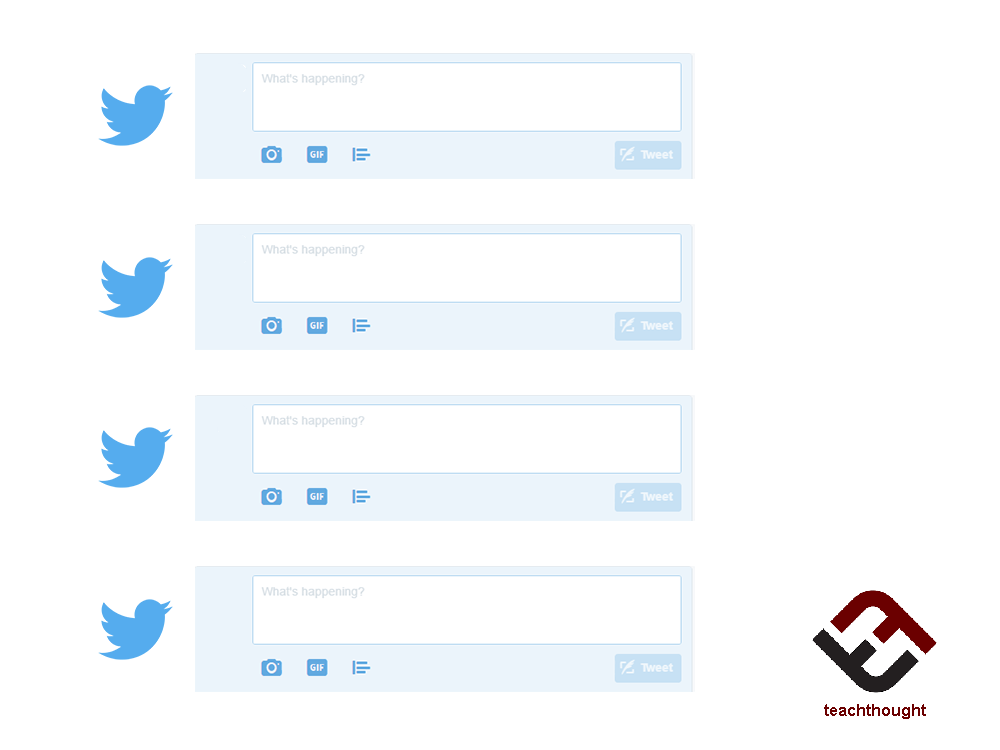
Twitter Can Help Students Write Better Thesis Statements
by TeachThought Staff
Few concepts bewilder young writers–emerging, hesitant, struggling, and gifted alike–more than the thesis statement.
The definition of a thesis statement is (mostly) simple: the writer’s claim or argument distilled into a single sentence. Common mistakes for thesis statements include it being too broad or narrow in terms of topic, unclear in its position, or vague in terms of intended audience and function: What are you arguing for, and to whom?
Are there existing and legitimate arguments against your position? This is, of course, a matter of research, counter-argument anticipation, and more. (Using Intelligence Squared Oxford-style Debates is a useful resource here.)
But oftentimes, the challenge for students is a matter of length–brevity and conciseness. Having something important to say, and then establishing a clear and debatable position on a clear and relevant topic is difficult enough. Narrowing it down to a single sentence is harder still.
Maybe twitter can help? We’re previously shared 8 reflective questions to help any student think about their learning. Let’s take a look at using twitter to sharpen student understanding of writing–specifically, writing thesis statements.
How Twitter Can Help Students Write Better Thesis Statements
Tweets are, of course, limited to 280 characters–plenty for a crisp and well-written sentence.
So let them try, then. Ask them to tweet their thesis statement–and a good one, too, checked against some kind of checklist.
Have them use a class hashtag of some sort to anchor the discussion and make it easy for peers to follow.
Decided whether you want it to be anonymous or not. Or even consider making a single ‘dummy’ account that everyone can use.
Then follow the hashtag stream somehow with students–on a projected screen, on their BYOD devices, laptops, etc.–whatever you use. Next, model for students how to evaluate a thesis statement (using a checklist, for example). Then let students respond to certain thesis statement drafts with revisions they think should be made–that is, with the revised thesis statement.
You could also have each student ‘improve’ three to five thesis statements, then go back and refine their own and tweet it again (if they’re using their own accounts) using #final as a hashtag to reflect the thesis statement is ready for use.
Using Twitter Offline For Privacy Concerns
Of course, none of the above is necessary at all.
You don’t need to actually use twitter to benefit from its characteristics. It also might be that the above activities aren’t at all helpful depending on where your writers are. The point is to practice making brief claims in a highly-visible and shareable way–and as the most popular micro-blogging platform in the world, twitter can provide a useful framework for this process.
Students can take that as an example and write it down on paper-tweets, as seen above and below. It can still be ‘published’ in the classroom, and as a bonus, privacy/anonymity is no longer a concern.
Using social media in the classroom can be dicey, but if you’re laser-focused with he goals and idea, it can help quickly scale student learning.

Tweet Your Thesis: How Twitter Can Help Students Write Better Thesis Statements